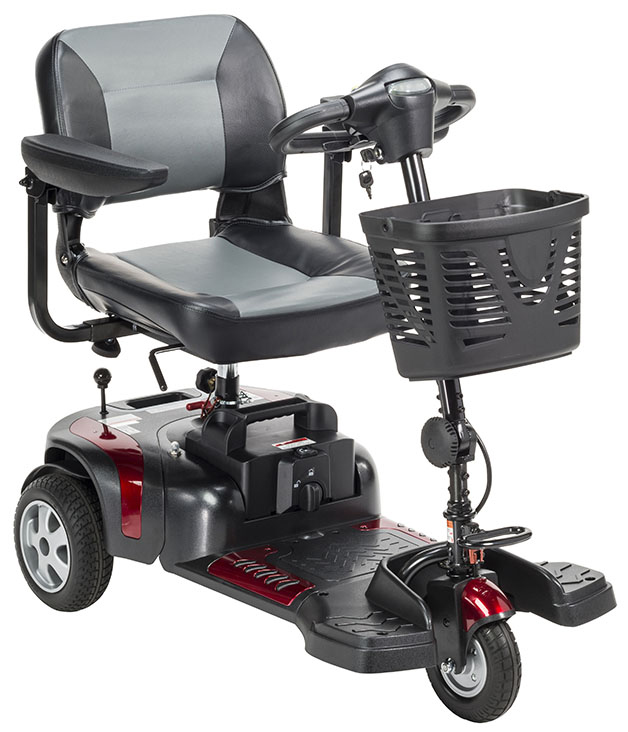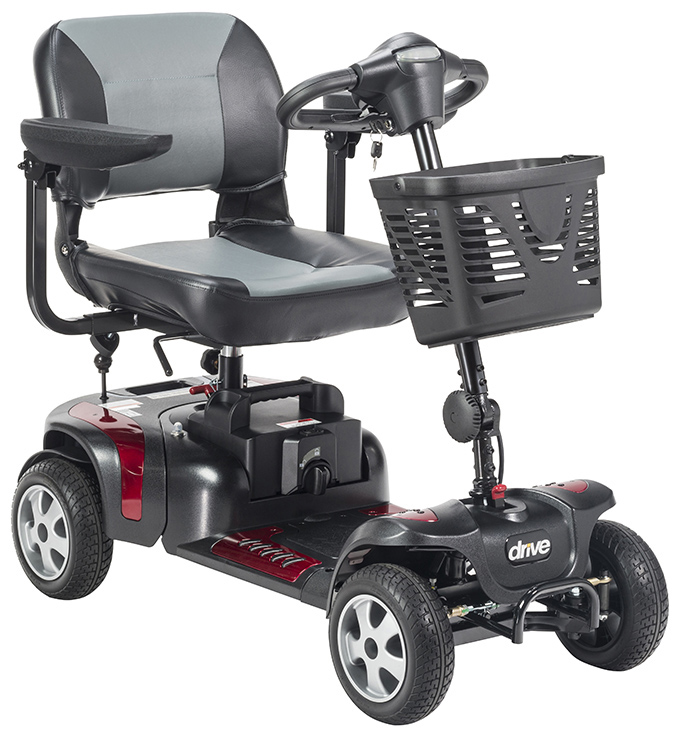A Word About Wheels
3-WHEELS VS. 4-WHEELS
Three-wheel scooters are configured with two drive wheels in the back and a single wheel in the front for steering. Three-wheel scooters offer excellent maneuverability versus similar four-wheel models, thanks to their lower turning radius, making them better for indoor use, where nimbly maneuvering around obstacles is a necessity.
While they include anti-tip wheels for safety, three-wheel scooters are not quite as stable as four-wheel scooters. They are best used on smooth, level surfaces and not on rougher outdoor terrain like grass or gravel.
Compared to four-wheel models, three-wheel scooters offer more legroom for users who are taller or suffer from knee or leg ailments. Also, three-wheel scooters are lighter in weight and cost less than comparable four-wheel scooters.
Advantages- Tight turning radius for indoor maneuverability
- Lighter overall weight than four-wheel scooters
- Lower cost than four-wheel scooters
- Greater legroom
- Stability not ideal for rough, outdoor terrain
 Phoenix HD 3 Wheel Mobility Scooter
Phoenix HD 3 Wheel Mobility Scooter
Four-wheel scooters offer improved stability over 3-wheel scooters, making them a better option for users who plan to regularly drive on uneven outdoor terrain.
Four-wheel scooters are configured like an automobile, with two drive wheels at the rear and two wheels for steering at the front. Compared to three-wheel scooters, four-wheel models provide excellent stability over any kind of terrain—indoor or outdoor—by resisting tipping, even at top speed, and safely handling hills and curbs. Four-wheel stability is excellent for users who may suffer from poor balance.
Because the four-wheel configuration increases the scooter’s turning radius, these scooters do give up some maneuverability, making them less desirable for primarily indoor use. However, smaller four-wheel scooters do still offer a turning radius that allows the user to perform most indoor functions. Four-wheel scooters are also slightly heavier and cost more than comparable three-wheel units.
Advantages- Great overall stability, including on outdoor terrain
- Larger turning radius limits indoor maneuverability
 Phoenix HD 4 Wheel Mobility Scooter
Phoenix HD 4 Wheel Mobility Scooter
